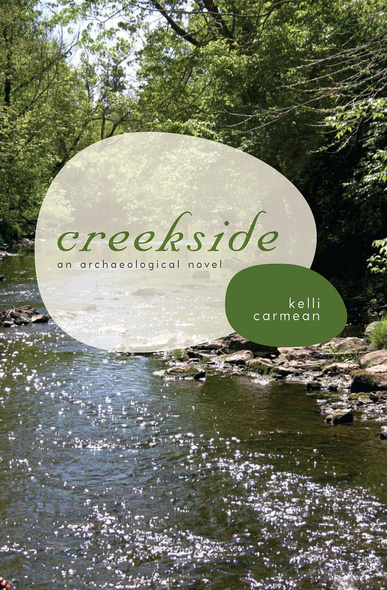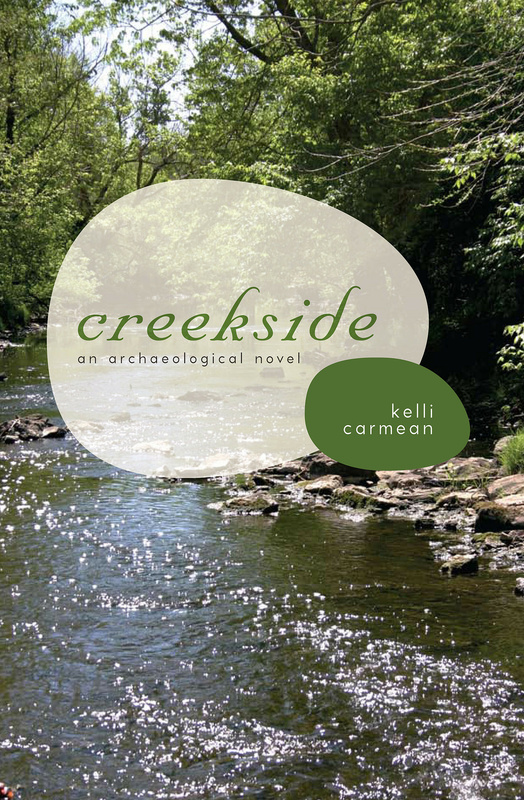Creekside
An Archaeological Novel
In Creekside, dedicated archaeologist Meg Harrington guides her students in a race against time to protect the legacy of the past before bulldozers rip it to shreds.
The setting is a Kentucky pasture slated for development—the construction of the new Creekside subdivision. Once, that same beautiful stretch of land was home to three generations who experienced love, loss, and tragedy in their log cabin beside the creek. It was here during the late 18th century that Estelle Mullins struggled to build her home on the dangerous frontier.
In Meg’s 21st-century world of archaeology we read about excavation techniques, daily experiences at a dig, tight construction deadlines, the use of heavy equipment, report writing, artifact analysis, damage from looters and collectors, and the reality of site destruction in the path of modern development. The depiction of Estelle’s frontier life includes Kentucky’s early Euro-American settlement of the Cumberland Gap, encounters with Shawnee defending their land, Protestant fragmentation, the rise of religious fundamentalism, the immigrant stampede down the Ohio River, and the persistent issue of class-based land ownership.
The two partially interwoven story lines link artifact and place, ancestors and descendants, the present and the past, and inspire us to explore the personal connections between them all in fresh and vital ways.
“Carmean skillfully and convincingly weaves together the two seemingly independent plots in her engaging portrayal of past and present in the Kentucky Bluegrass. These plots form a circle that begins with a young 18th-century couple starting their life together at Creekside and ends with a 21st-century couple getting their start in the same place. In many ways, Creekside is as much about a sense of place as it is about people. Carmean keeps your attention with her many tantalizing hints about the ties between the characters. In the end, she leaves it up to the reader to determine the strength of those relationships between past and present—between archaeological anonymity and personal identity.'
—Richard W. Jefferies, University of Kentucky
Creekside weaves together two fictional stories, separated by two centuries. The first story is about Virgil and Estelle Mullins, a young 18th-century couple who leave family in Virginia to cross the mountains and settle in the wilderness of Central Kentucky. The second story is about Meg Harrington, a 21st-century archaeologist who is working with students to excavate that pioneer farmstead. Carmean faced the usual challenges of writing historical fiction: creating characters with whom readers can identify and rich, interesting plots grounded in historic accuracy. But with a twist.
‘Creekside explores the tension between preservation and development. Carmean is passionate about preventing destruction of archaeological sites so they can be studied into the future. The more we know about the past, she said, the better we can understand the present and gain insight for the future.Preservation is problematic because it often comes down to money. Archaeologists usually have few resources to work with, and ancient and historic sites are usually destroyed to make way for well-financed development. The academic culture of archaeology, which is focused on data collection rather than storytelling, often hurts archaeologists' ability to communicate their values. ‘Carmean hopes Creekside will help change that.’--Tom Eblen, Lexington Herald-Leader
‘Creekside combines explaining the process of an archaeological dig with an informed sense of the past as it might have been lived in that very spot. . . . Kelli Carmean begins this delightful story with an author’s note saying, among other things, that a ‘hidden agenda for the novel is public outreach in archaeology.’ This is an excellent aspiration for a splendid novel, and I certainly hope that her ‘hidden agenda’ is realized by a worthy place on bestseller lists.’—American Antiquity
Kelli Carmean is Professor of Anthropology at Eastern Kentucky University.





